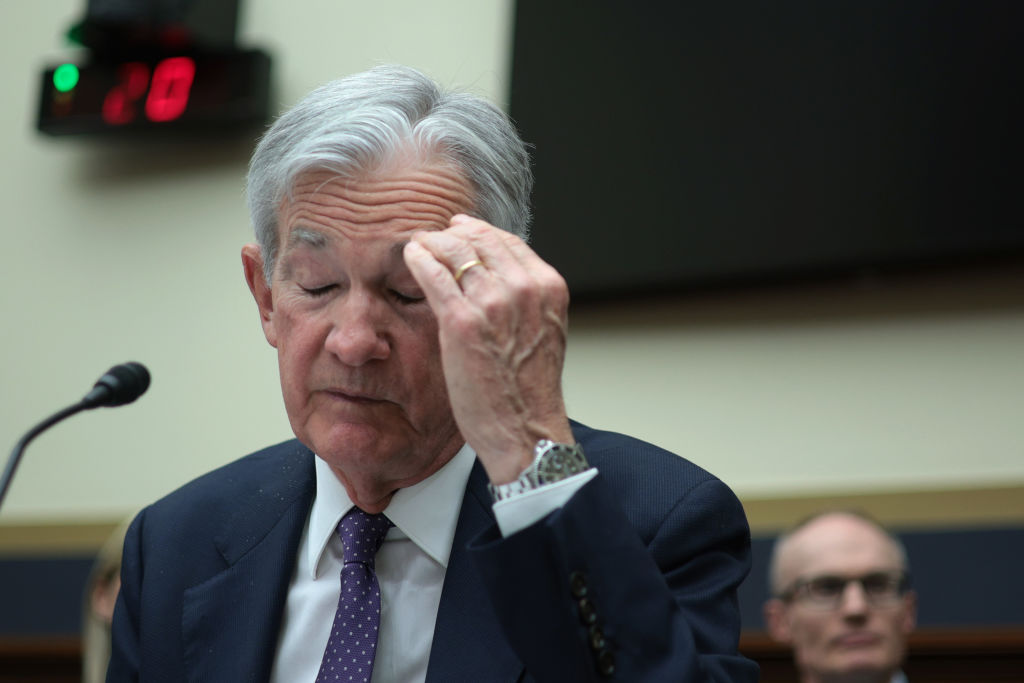As we predicted in a July market update to our clients, on August 8th the U.S Federal Reserve left interest rates untouched. The pause ended the streak of seventeen straight interest rate hikes that began in June of 2004. The Fed funds rate, which was at a forty-six year low of 1% at the start of the rate hike campaign, is now at 5.25%.
The Fed justified the pause by stating: "Economic growth has moderated from its quite strong pace earlier this year." It also implicated "a gradual cooling of the housing market and the lagged effects of increases in interest rates and energy prices" as factors slowing growth.
These statements make it seem like the Fed is calling the shots, however, with the real estate market slowing down, consumer loan rates precariously high, and a sagging stock market the Fed had no choice but to pause.
MoneyWeek
Subscribe to MoneyWeek today and get your first six magazine issues absolutely FREE

Sign up to Money Morning
Don't miss the latest investment and personal finances news, market analysis, plus money-saving tips with our free twice-daily newsletter
Don't miss the latest investment and personal finances news, market analysis, plus money-saving tips with our free twice-daily newsletter
How will the pause affect the precious metals and equity markets? History might provide some insights here.
US interest rates: lessons from history
Interest Rates 1996 2001:
In 1996, the Fed Chairman Alan Greenspan claimed that the U.S economy was suffering from "irrational exuberance" in the stock market. In other words, too much money was being piled into the booming technology and internet sectors.
For a few months, the speech created a short lived downturn in the equity markets. Nonetheless, after issuing the warning Greenspan didn't touch interest rates and the S&P 500 continued to soar.
Beginning in October of 1998, two years after Greenspan's infamous speech the S&P 500 exploded; rising from about 1000 to over 1400 by July of 1999. The Fed reacted to this 40% increase in the S&P 500 by hiking interest rates from 4.75% in June of 1999 to 6.5% in June of 2000.
Three months after the interest rate was lifted to 6.5%, the S&P 500 started to crash. The Fed had apparently overshot the interest rate and after a brief lag the S&P began to decline.
In reaction to the onset of the crash, the Fed reversed course and began a series of interest rates cuts in January of 2001. Nonetheless, the S&P 500 continued to decline and the Fed continued to cut interest rates. By June of 2002 interest rates were dropped to a historic low of 1%; yet this accommodative policy didn't seem to help S&P 500, which dropped 47%.
In April of 2003, five months after the Fed interest rate reached 1%, the bottom for the S&P 500 was established. Again, there was a lag between the conclusion of a series of Federal interest rates moves and the moves in the equity markets.
Since April of 2003, the S&P 500 is up more than 50% and has been rising almost non-stop. The un-naturally low 1% interest rate (negative real interest rate) created by the Fed in 2003 spurred a boom in equity and commodity markets. In turn, the rise in commodities was the driver behind the latest interest rate hike campaign that started in 2004.
US interest rates: the commodities bull
Since June of 2004, in response to rising oil and commodity prices, the interest rate has been increased seventeen times and it currently stands at 5.25%. Like the stock market in 1999, which didn't react to the Fed's tightening policy until months later, commodity prices have failed to respond to the recent rate hikes designed to dampen inflation. In fact, oil has risen from $22 a barrel in 2003 to over $70 a barrel today.
After all these rate increases, the Fed now has its hands tied behind its back. On the one hand, the Fed is still dealing with the pressures of rising commodity prices. On the other, the economy is increasingly showing signs that it is slowing down.
It's uncertain at this time whether rates are now high enough to clamp down commodity prices. A $100 a barrel oil price could force the Fed to tighten further. However, taking history as a guide, the Fed tends to overshoot on interest moves and equity and commodity markets usually react after a period of lag.
It is possible that the Fed has already overshot rates again. If this is the case, history shows us that the equities markets may begin to buckle within the next three to six months. Such an outcome could prompt the Fed to possibly ease rates by early next year.
US interest rates: what this means for gold and silver
The pause signals a new era for the precious metals. Since 2004, gold and silver have been rising in tandem with rising interest rates. It remains to be seen whether the precious metals will continue to rise independent of interest rate hikes.
In April, Newmont's President Pierre Lassonde predicted that the $850 gold price of the 1980s could be challenged within 18 months. August and September will be critical in determining the future for the precious metals. If gold can hold above its 200 day moving average of $580, it will strengthen Lassonde's case for a robust metals market for the next 6-9 months.
As the markets take the time to adjust to the Fed's interest rate policy, metals investors must become more macro-aware and keep a close eye on the U.S equity markets as well as the metals markets.
by John Lee, CFA of Mau Capital: visit goldmau.com. First published on kitco.com
Get the latest financial news, insights and expert analysis from our award-winning MoneyWeek team, to help you understand what really matters when it comes to your finances.
MoneyWeek is written by a team of experienced and award-winning journalists, plus expert columnists. As well as daily digital news and features, MoneyWeek also publishes a weekly magazine, covering investing and personal finance. From share tips, pensions, gold to practical investment tips - we provide a round-up to help you make money and keep it.
-
 ‘Why I have ditched my Help to Buy ISA for cash savings and the stock market’
‘Why I have ditched my Help to Buy ISA for cash savings and the stock market’Without the 25% bonus, my Help to Buy ISA is effectively redundant, says MoneyWeek writer Sam Walker.
-
 Is your inheritance tax allowance cut if you sell to downsize or sell your home to pay for care?
Is your inheritance tax allowance cut if you sell to downsize or sell your home to pay for care?Downsizing relief is a little-known benefit that could save your loved ones tens of thousands of pounds in inheritance tax after you’ve died.
-
 The challenge with currency hedging
The challenge with currency hedgingA weaker dollar will make currency hedges more appealing, but volatile rates may complicate the results
-
 Can Donald Trump fire Jay Powell – and what do his threats mean for investors?
Can Donald Trump fire Jay Powell – and what do his threats mean for investors?Donald Trump has been vocal in his criticism of Jerome "Jay" Powell, chairman of the Federal Reserve. What do his threats to fire him mean for markets and investors?
-
 Freetrade’s new easy-access funds aim to beat top savings rates
Freetrade’s new easy-access funds aim to beat top savings ratesFreetrade has launched an easy-access exchange traded fund (ETF) range - here’s how the ETFs work and how they compare to the savings market
-
 Go for value stocks to insure your portfolio against shocks, says James Montier
Go for value stocks to insure your portfolio against shocks, says James MontierInterview James Montier, at investment management group GMO, discusses value stocks and slow-burn Minsky moments with MoneyWeek.
-
 Where do we go from here?
Where do we go from here?Features A new series of interviews from MoneyWeek
-
 As China reopens, why pick an income strategy?
As China reopens, why pick an income strategy?Advertisement Feature Yoojeong Oh, Investment Manager, abrdn Asian Income Fund Limited
-
 Income in the USA
Income in the USAAdvertisement Feature Fran Radano, manager on The North American Income Trust
-
 The challenge of turbulent markets
The challenge of turbulent marketsAdvertisement Feature Today, ISA investors face one of the most challenging economic environments seen in recent years. However, good companies can still thrive, even in the toughest economic conditions. That’s why BlackRock’s fund managers focus on these businesses when they’re looking for investment opportunities.

